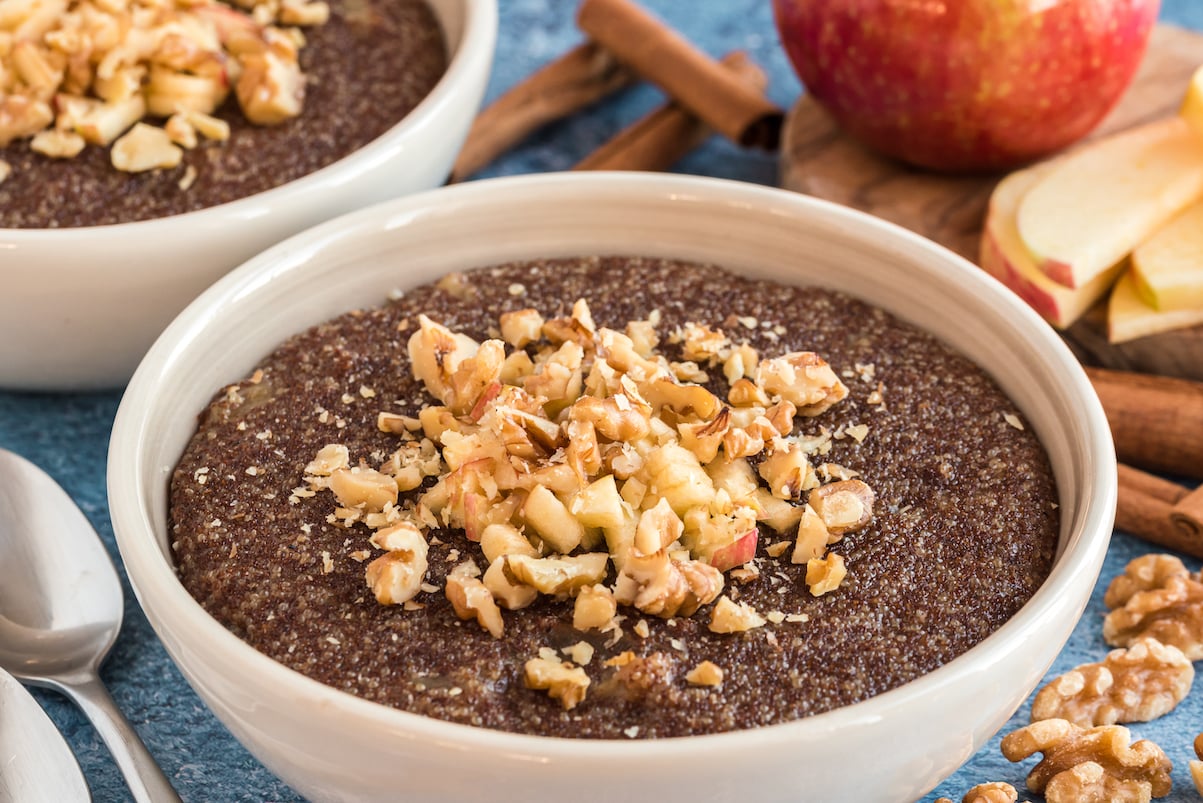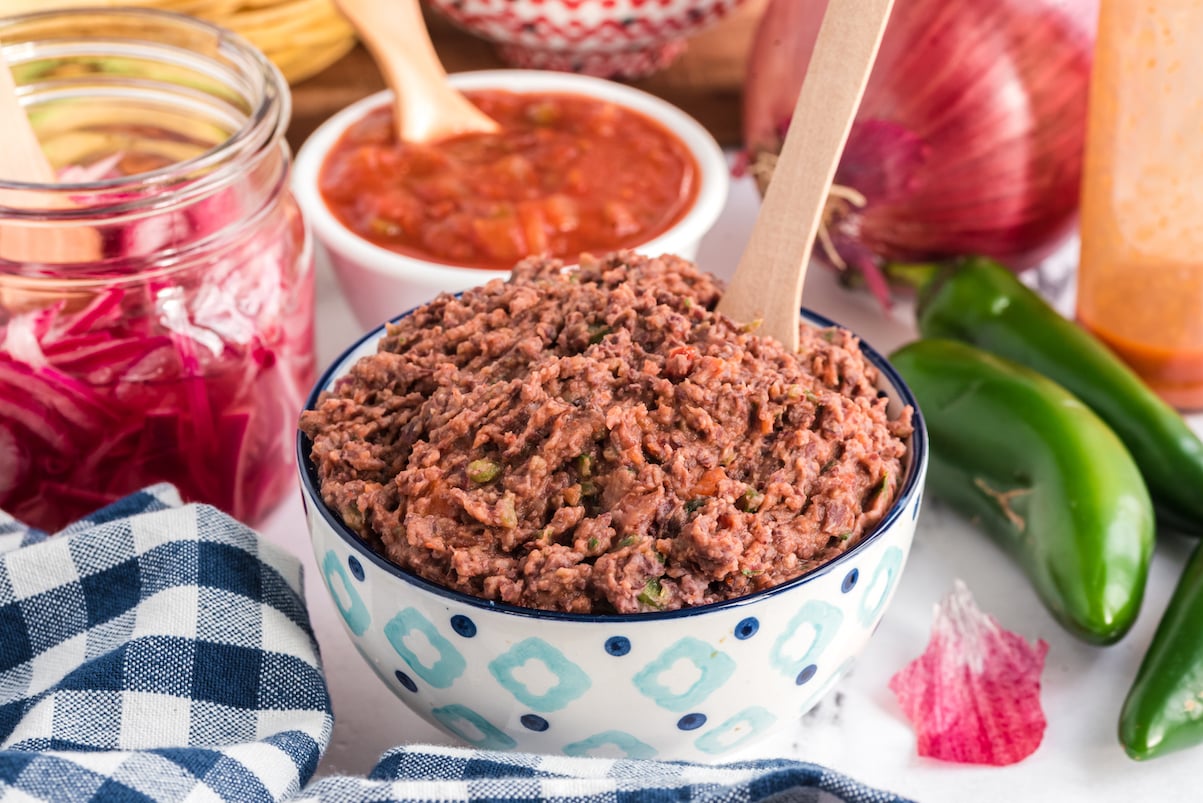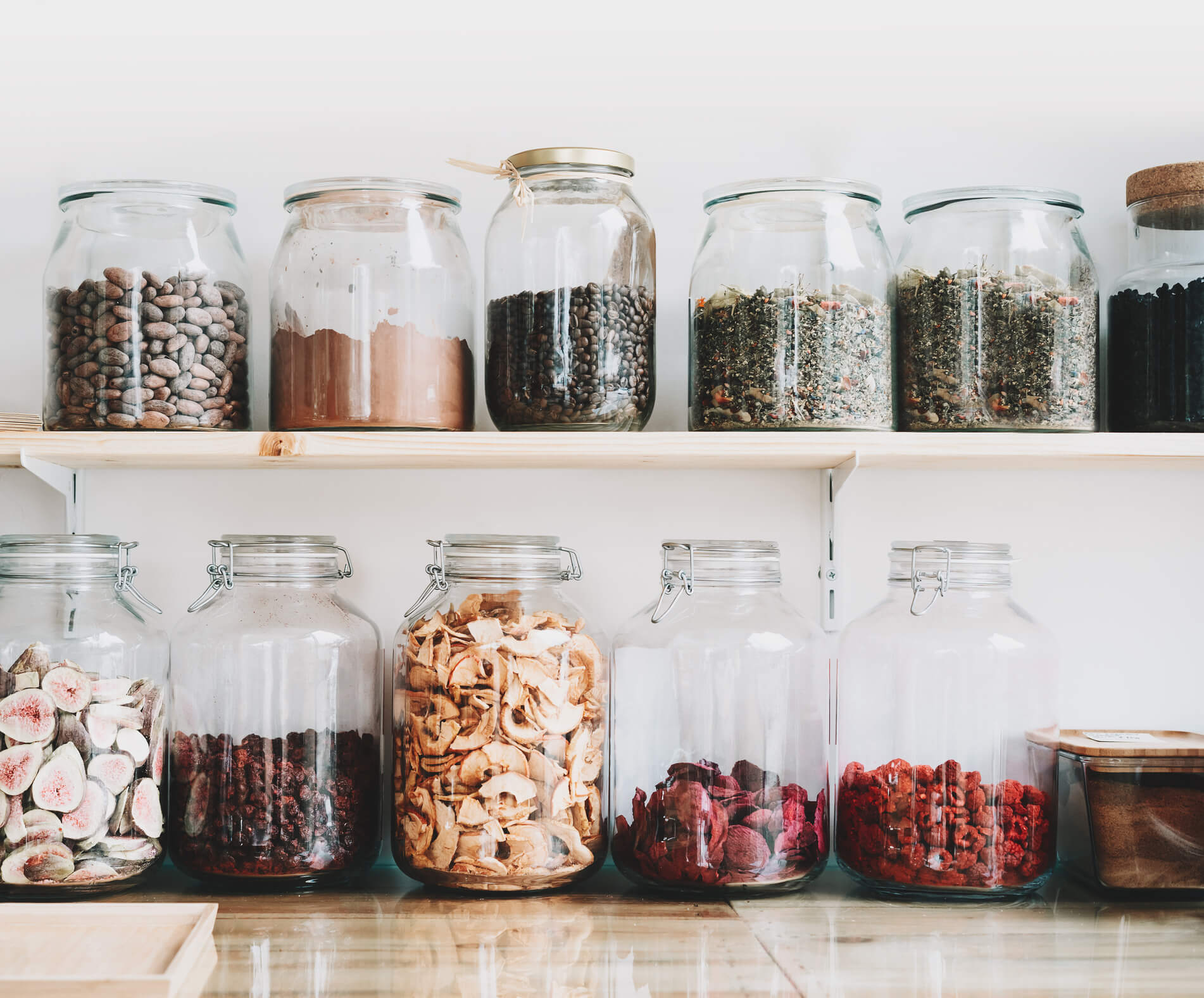Have you ever searched for a recipe online, found one that looks perfect, scanned the ingredients in your kitchen, and yelped with excitement that you have all of them on hand? Conversely, have you ever been craving a certain something, say Chana Masala, only to discover that you’re out of both chickpeas and rice? What a way to dash your hopes of a savory supper and disappoint your taste buds!
The difference between these two scenarios is obvious — the presence (or absence) of basic plant-based ingredients. But having an organized and stocked plant-based pantry can help you avoid that kind of kitchen disaster. By the end of this article, you’ll know exactly what to stock your pantry with (and even get a grocery list of plant-based pantry staples that is printable!)
Why Keep a Plant-Based Pantry?
Having a well-stocked pantry means you can create all kinds of fun and delicious recipes without extra trips to the grocery store. When it comes to saving time and minimizing stress, this is a big win! And it doesn’t end there. I have four more fabulous reasons that may inspire you to keep a well-stocked pantry.
First, having ready-to-go, plant-based diet staples on hand can save you time in the kitchen. Second, plant-based recipe creation becomes easier and more efficient when your kitchen is consistently stocked with foundational ingredients to create a variety of healthy meals. Third, when you have plant-based ingredients on hand, plant-based eating sticks, becomes a healthy habit, and becomes your lifestyle (easy-peasy, like brushing your teeth!).
Finally, you’re also more likely to cook more and order out less, which actually leads to four bonus reasons. You’ll put healthier ingredients into your body. You’ll save money (you know this is true if you’ve ordered take-out or delivery lately, which can include delivery fees, gas fees, taxes, and tips — and that’s before adding your actual meal cost!). You’ll avoid polluting plasticware, plastic containers, and little condiment packages that typically accompany take-out foods. And, you won’t wake up looking like a blowfish (I don’t know about you, but the excessive sodium in restaurant meals can leave me with puffy morning eyes).
Setting Up a Whole Foods, Plant-Based Pantry
As great as it is to know why keeping a plant-based pantry can be a key to living a lifestyle you love, it can be easier said than done. So our How to Cook series is here to help you learn how to stock a pantry!
In this video, I’m going to take you into my kitchen to show you an example of a plant-based pantry and to offer ideas on how you might stock your own. It’s one more step in setting you up for success in your own kitchen so that you’re empowered with information, confidence, and skills to successfully create delicious and nutritious plant-based meals.
https://www.youtube.com/watch?v=avha-IFbl0k
Foods to Stock in Your Plant-Based Pantry
Here’s a recap of plant-based pantry essentials to help kick-start your shopping list and help you figure out how to stock a healthy pantry for the first time. For a printable plant-based grocery list, click here.
Organic Whole Grains (and Pseudo-Grains)
For more on whole grains, see this article.
Organic Legumes (Dried and Canned)
- Black beans
- Pinto beans
- Green/brown lentils
- French lentils
- Chickpeas (aka garbanzo beans)
For more about beans, see this article.
Nuts and Seeds (and Nut and Seed Butters)
- Almonds and almond butter
- Walnuts
- Cashews and cashew butter
- Flax seeds
- Chia seeds
- Hemp seeds
- Sunflower seeds and sunflower seed butter
- Pumpkin seeds
For more about nuts and seeds, see this article.
Select Organic Flours
- Legume flours, such as chickpea
- Oat flour
- Almond flour
- Legume pasta, such as lentil penne
- For some people, gluten-free baking mixes and whole wheat flour can make an appearance, too
Spices and Seasonings
- Turmeric
- Cinnamon
- Ginger
- Cumin
- Paprika (sweet and smoked)
- Chili pepper
- Nutritional yeast
- Any others that you love and use regularly
For more on cooking with herbs and spices, see this article.
Organic Tomato Products
- Tomato paste
- Diced/crushed tomatoes
- Whole tomatoes
- Tomato sauce
- Any that you use often
For more on tomatoes, click here.
Dried Fruit
- Dates
- Cranberries
- Any others that you love
Oils (if you use them)
- Avocado oil
- Extra virgin olive oil
Liquids
- Plant-based milk (plain, unsweetened)
- Vegetable broth (unsalted)
- Coconut aminos
- Reduced-sodium tamari
- Organic apple cider vinegar
- Sherry or red wine vinegar
- Organic rice vinegar
Organizing Your Plant-Powered Pantry
One way to save money and minimize packaging is to purchase plant-based staples and ingredients in bulk. You might find nuts, seeds, beans, peas, lentils, grains, and more in the bulk section of your grocery store. You might even scoop the bulk items into your own bags or storage containers. (Pro tip #1: Before you load up, make sure to ask your store if they accept outside containers — most are accommodating. Pro tip #2: Weigh your containers before filling them so you only pay for what you buy.) Bringing your own containers helps to keep plant-based kitchen essentials organized and avoids having to use bags from the store, minimizing more plastic waste (extra high fives all around for that!).
Using empty glass condiment jars that have been thoroughly washed is an economical, safe, and fun way to store a variety of pantry items. If you do choose to organize your cabinets in mason jars or other plastic-free containers it’s important to label these healthy pantry essentials. While you may be able to tell the difference between cashews and almonds, flours and whole grains can get tricky — oat groats and farro can easily be mistaken for each other (not that I’m speaking from experience)! Label them with the name and date you purchased them so you also know when they expire.
Organize your ingredients in a first in, first out manner so that the older ingredients get used first to avoid food waste, which is good for the planet and your pocketbook.
To make recipe creation efficient, group categories of ingredients together — all grains are together, nuts and seeds are together, and spices are together, with the most frequently used spices front and center, so they’re easy to grab.
Healthy Pantry Recipes
Below are some flavorful and nutritious recipes for you to create using your plant-based pantry essentials. Plant-based blogs like ours can help you find a recipe for every plant-based food you’re interested in.
Apple Pie Porridge is an easy to prepare, one-pot meal that will cook while you’re asleep and gently wake you in the morning with its warm aromas. The 5-Minute Smoky Black Bean Dip takes only minutes to prepare and is especially quick and easy to make when you already have the ingredients on hand. Finally, whether you’re a busy parent looking for something that the whole family will love, or living solo looking for a meal that will last for days with leftovers, turn to the Chili Mac ‘n Cheese!
1. Apple Pie Porridge

Teff and amaranth, technically seeds, are tiny but mighty with their plant-based protein, fiber, and nutrient content. From a culinary standpoint, they’re favored for their ability to cook quickly (less than 30 minutes on the stovetop!). In this recipe, they’re added to a slow cooker and ready for you in the morning. Warm aromas, ready-to-eat breakfast, nourishing ingredients — it doesn’t get much better than that!
2. 5-Minute Smoky Black Bean Dip

Once you’ve prepped home-cooked legumes or drained your BPA-free canned beans, this dip comes together in minutes (literally, five minutes!). Get out those spices and get ready to blend. It’s versatile, too — enjoy it as a veggie dip, avocado toast spread, or taco filling. The options are endless!
3. Chili Mac ‘n Cheese

New to nutritional yeast? This one’s for you. Nooch lover? This recipe is for you — and your recipe library, too! To make this Chili Mac ‘n Cheese, turn to your shelves for whole grain or legume macaroni, cashews (or raw sunflower seeds), nutritional yeast, black beans, refried beans, and plenty of spices. When you make this dish, you’ll get a true sense of what it’s like to create plant-based deliciousness thanks to a well-stocked pantry.
For even more pantry recipes, check out 10 Easy Pantry Meals to Make Using Minimal Ingredients.
Ready to Stock Your Plant-Based Pantry?
A well-stocked pantry is key to making deliciously nutritious meals with minimal stress and maximum results. You can use the printable pantry list we’ve included here. Or grab your phone or a pen and paper to start creating your plant-powered pantry shopping list. Begin with what you know and love. As you become more familiar with ingredients and comfortable in your plant-based kitchen, you might try a new ingredient with each trip to the grocery store. I’d love to hear what key ingredients make up your plant-based pantry and any organizational tips you’d like to share!
Tell us in the comments:
- What whole grains are always stocked in your pantry?
- What new plant-based pantry item would you like to try this week?
- What’s your favorite go-to meal that comes together easily with ingredients from your pantry?
Feature image: iStock.com/NataliaDeriabina




